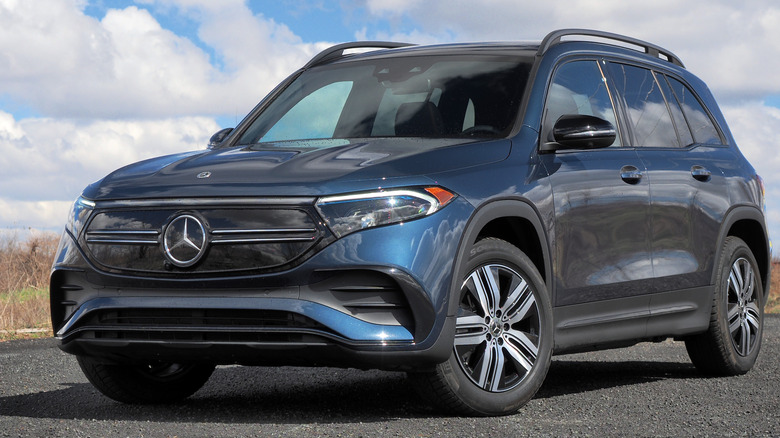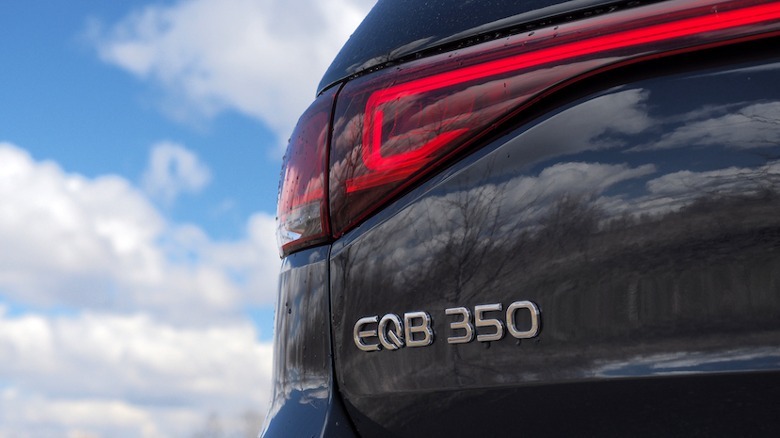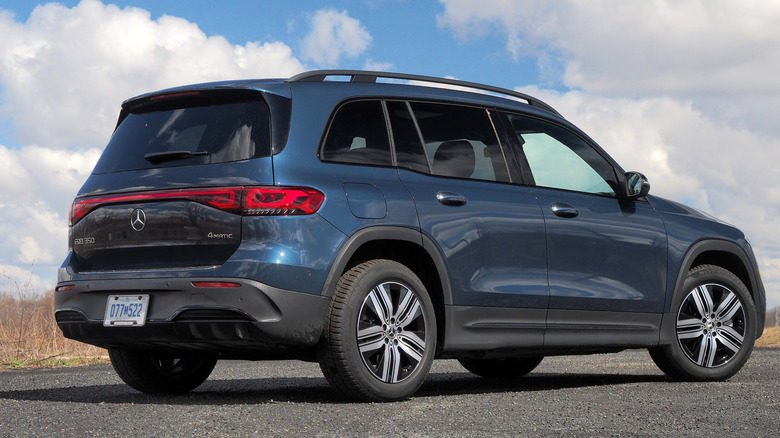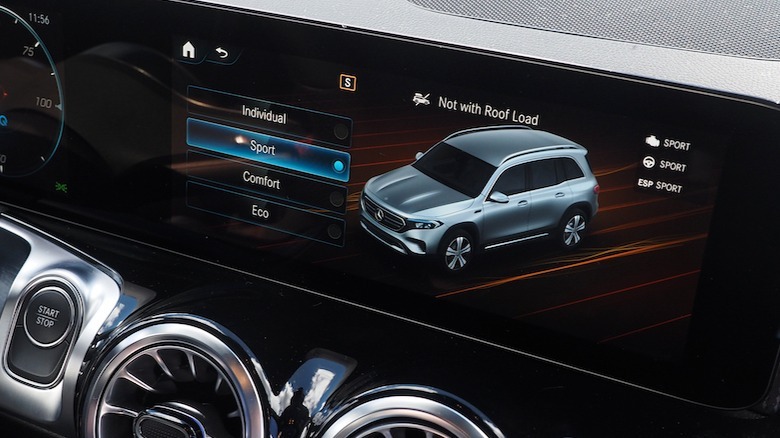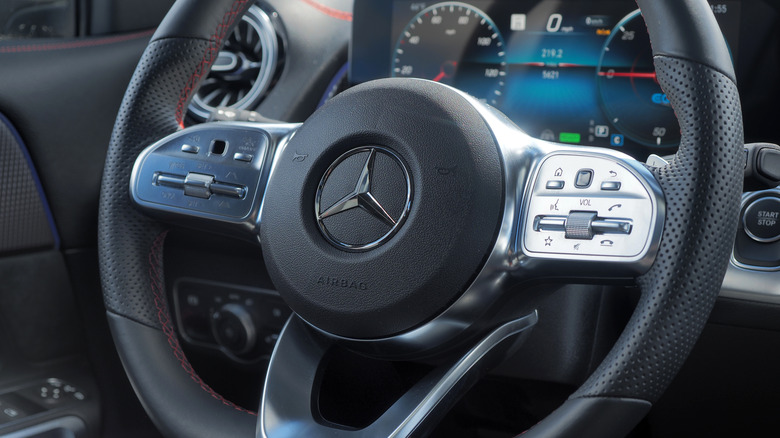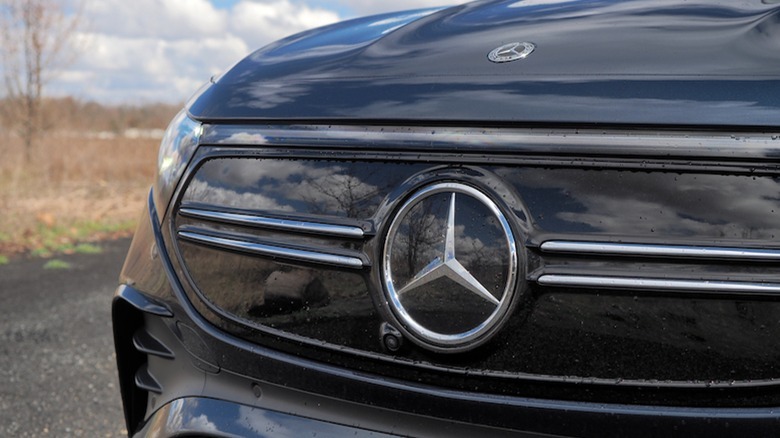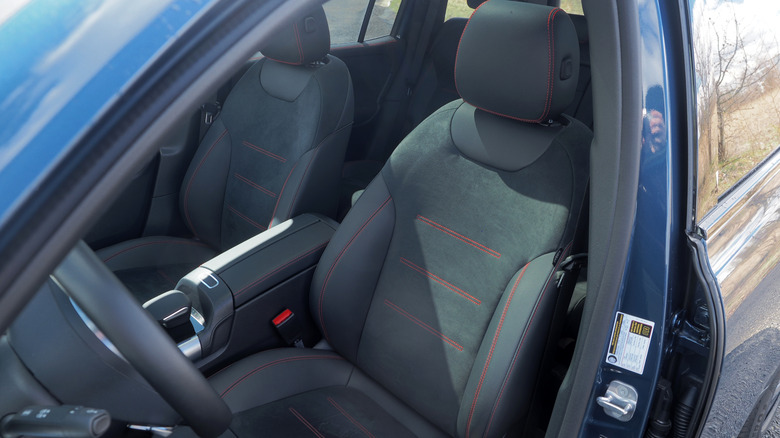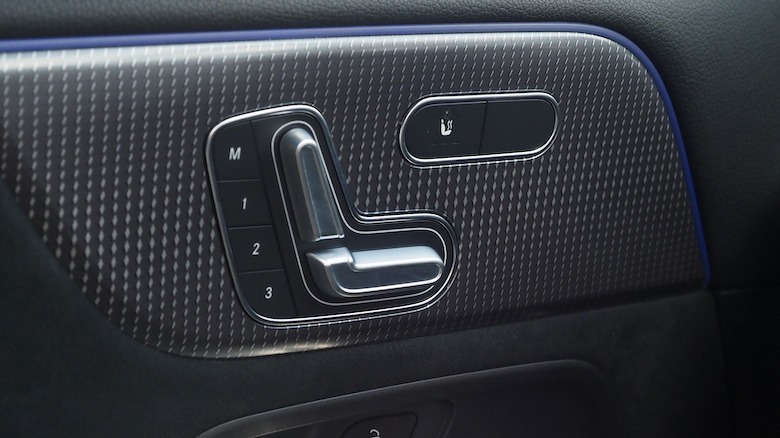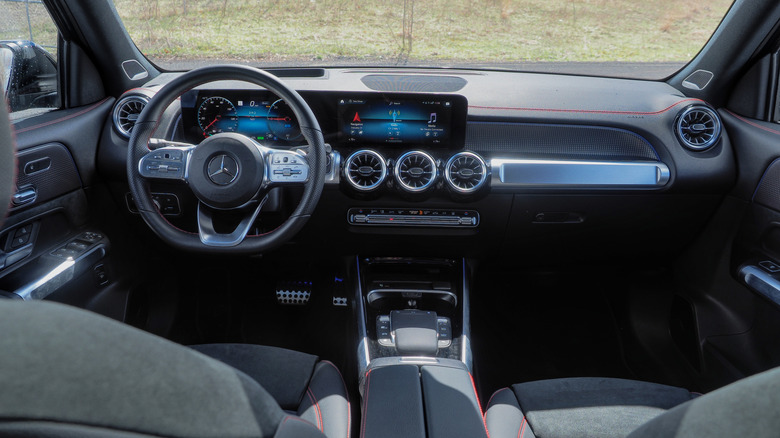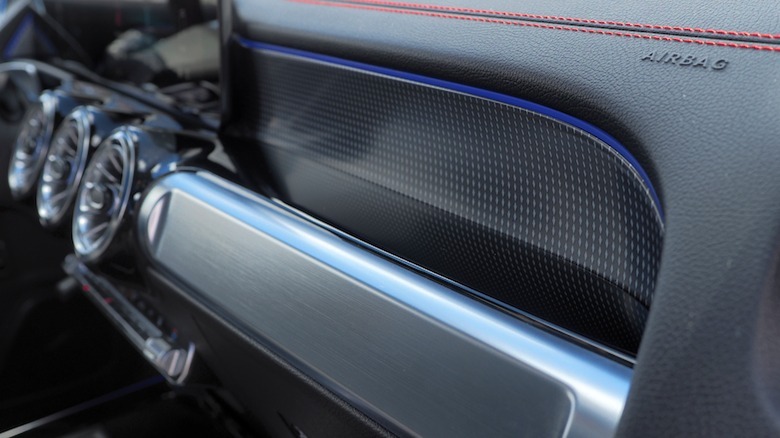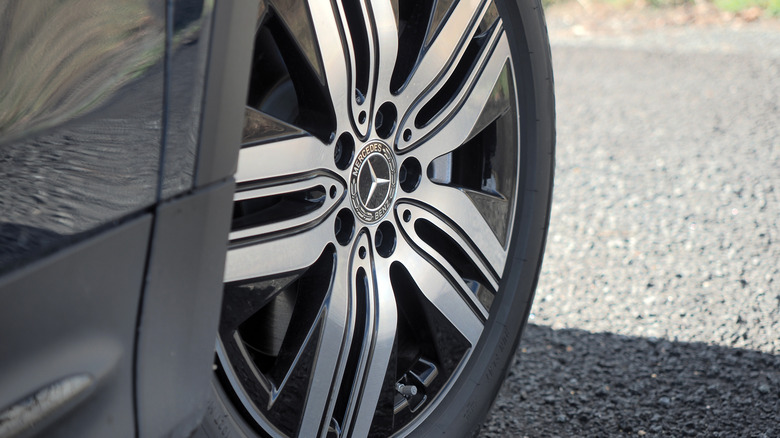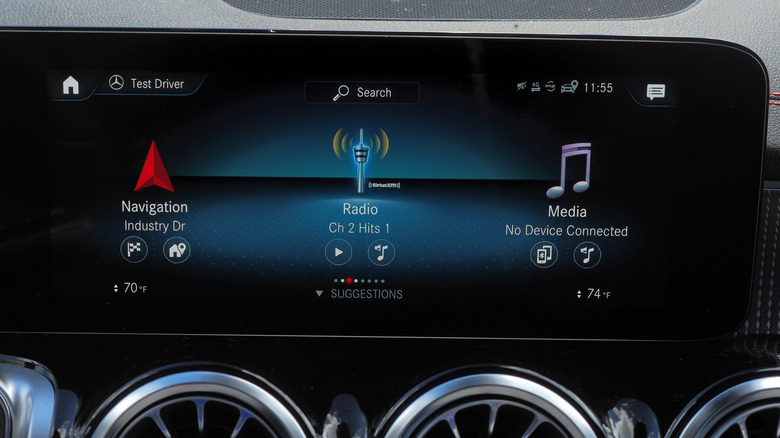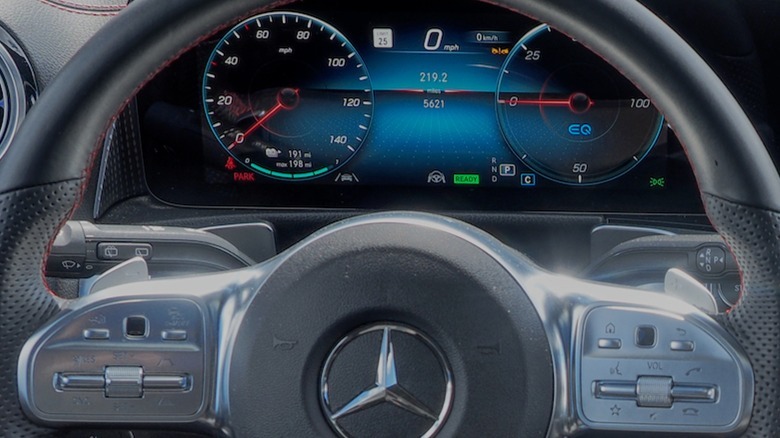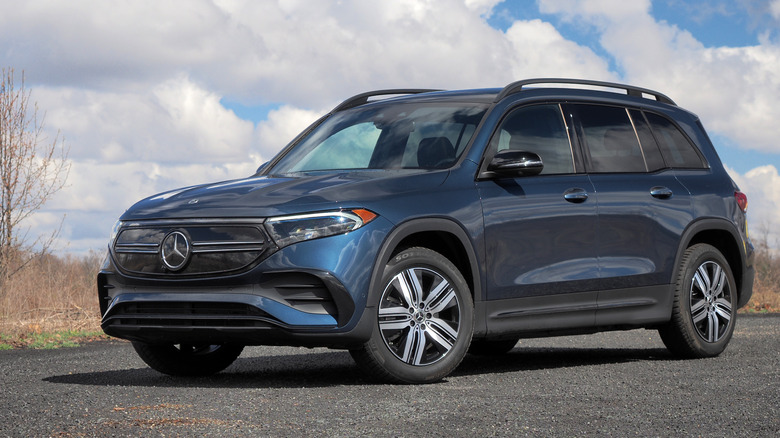Mercedes-Benz EQB Review: 3-Row Electric SUV Blends In Too Well
- Spritely all-electric drivetrain
- Spacious cabin offers rare three-row option
- Solid standard active safety package
- Design doesn't scream "It's an EV"
- Expensive, especially with options
- Range is only average
- Third row seats are small
- Slower DC fast charging than rivals
Park the EQB 350 4MATIC in a lineup of Mercedes-Benz's EVs, and people would be forgiven for assuming a gas SUV had snuck in among the electric vehicles. Angular, where its brethren are curvaceous, it's the cheapest all-electric model in the automaker's U.S. range, though "cheap" is, of course, relative.
The design disparity is down to the EQB's duality of drivetrains: it was first offered in internal combustion form as the GLB. It's not an unusual strategy among car companies, though for Mercedes, it's atypical. With automakers pushing to get more EVs onto dealership forecourts, shared platforms can be a time-saving advantage compared to developing electric-only architectures.
On the flip side, critics argue that you simply can't get the most efficient, effective EV on a jack-of-all-trades platform. And, when you're paying upward of $53k for an EQB, it's not asking too much to demand more than just a gas SUV reworked as an electric one.
A spritely seven-seater
On paper, the EQB 350 4MATIC's 6.0 second 0-60 mph time doesn't sound particularly dramatic (at least, in the grand scheme of fast EVs). In practice, though, the healthy 384 lb-ft of torque and perfectly acceptable 288 horsepower conspire to make the compact electric SUV feel much faster than that. Mercedes probably won't approve of the comparison, but it has the feel of an extra-potent golf cart: stab the accelerator, and the EQB leaps forward with puppy-like enthusiasm.
Things only get more eager in Sport mode (Eco mode dulls the throttle response in favor of battery savings, but to be honest, the EQB is still a spritely little chap). It's all very perky, but much like that supercharged golf cart, you wouldn't pick the electric SUV for backroad play. The steering is over-assisted, leaving it feeling oddly light and remote from the road.
Then again, for twirling around a tight parking lot, being able to pivot the EQB with one finger isn't a bad thing. Three levels of regen can be flipped between using the steering wheel paddles, though while there's something close to one-pedal driving, you'll still need to use the brake to pull the SUV to a complete stop. It'll creep forward, like a traditional automatic car, too, unless you give the brake pedal an extra shove to enable the brake-hold system.
Average range, slower fast charging
Total range, according to the EPA, is 221 miles from the EQB 350 4MATIC's 70.5 kWh battery. My mixed real-world driving saw the EQB return 2.6 miles per kilowatt-hour, which would equate to 183 miles total. You pay a penalty, certainly, for performance: the EQB 300 4MATIC could do 232 miles with the same size pack, Mercedes and the EPA suggest, though it takes a second longer in the 0-60 mph dash. Those who want maximum range and are willing to sacrifice both some speed and traction for it can get the EQB 250+: the cheapest configuration lacks all-wheel drive but offers the furthest distance of 245 miles, with a 0-60 mph time of 8.0 seconds.
When it comes to charging, there's support for 9.6 kW Level 2 home top-ups and up to 100 kW DC fast charging. That, Mercedes says, means a 10-80% charge will take around 32 minutes. Although the automaker plans to switch to the NACS charging connector in 2025, for the moment the EQB uses a CCS port.
Mercedes lags behind rivals when it comes to public charging speeds. A Genesis GV60, for example, has a 77.4 kWh battery but — thanks to supporting higher-power Level 3 charging rates — can go from 10-80% in about 18 minutes on a suitably potent charger. Even the considerably cheaper Nissan Ariya supports speedier DC fast charging than the EQB, at 130 kW.
A secret weapon that's not so unique any more
For a while, the EQB's secret weapon was its seats. Not so much how comfortable they are — they're actually a little on the firm side, though not unpleasantly so — but how many you could get. By default, the EQB seats five with an airy first and second row, but there's an option to add a third row with two more spots, taking the total capacity to seven.
Given the overall dimensions, the fact that the third row was snugly kid-scale was no great surprise. Still, a (relatively) affordable, three-row EV was a rarity and gave the EQB an unexpected boost among potential family buyers.
In 2024, though, there's a seven-seat contender to think about. The Kia EV9 we drove recently may not have the same badge cachet as the Mercedes, but it's roughly the same price as the EQB, offers more range, and has a more spacious third row.
A big price tag for a small SUV
Perhaps the EQB's biggest challenge is justifying its hefty price tag. Though the electric SUV starts at $52,750 (plus $1,150 destination) for the EQB 250+, by the time you reach this top-spec EQB 350 4MATIC, you're looking at $60,550 (before destination). There's no eligibility for the U.S. federal tax incentive for new EVs, either, and as with all of Mercedes' lineup, there's the potential to nudge the sticker price considerably further north with options and extras.
In fact, this particular EQB cruises past $73k including destination and the $750 Denim Blue metallic paint job. That leaves it just $5k behind an EQE SUV and more than a top-spec Cadillac Lyriq that offers more power, more range, and features like the Super Cruise hands-free driver assistance.
The $2,300 Pinnacle Package adds keyless entry, a 360-degree camera, a Burmester audio system, a wireless phone charger, and 19-inch wheels. This particular EQB swaps the latter for 19-inch AMG alloys for $600; the AMG Line Sport steering wheel is another $360. But the AMG Night Package is, at $2,890, separate: it includes special AMG body styling with a custom grille and glossy black exterior trim.
Plenty of options to nudge the price north
Then there's the $2,000 Technology Package, which includes a head-up display, MBUX Interior Assistant, and augmented reality navigation, but not heated front seats: they're another $500. Mercedes also charges $150 more for SiriusXM, $280 for a garage door opener, and $250 for the charging cable that most EVs include at no cost.
Finally, the $1,300 Driver Assistance Package Lite bundles Mercedes' multitudinous "actives": active brake assist with cross-traffic support, adaptive cruise control, active steering assist, active blind spot assist, active lane keeping and lane change assist, active emergency stop assist, and active speed limit assist. It also includes route-based speed adaptation.
There are, at least, some niceties included that many rivals charge extra for. A power liftgate, rain-sensing wipers, panoramic glass roof, and two decently-sized dashboard displays are all standard, as is a 115V AC power outlet. Mercedes' base active safety package is healthy, too, with blind spot assistance, active brake assist, active park assist, and automatic high beams.
Where the EQB compromises
The EQB does without the expansive — perhaps a little too expensive? — Hyperscreen touchscreen, as in the EQS SUV, with a more restrained 10.25-inch central panel and a matching one for the driver's instrumentation. MBUX, the automaker's infotainment platform, is swift and easily navigated, though while there's Apple CarPlay and Android Auto support, you'll need to plug in via the front USB-C port. Unlike more recent MBUX models, there's no wireless smartphone projection.
Overall, the EQB is of the generation of entry-level Mercedes models where the designers leaned heavily into glossy black plastic and faux-metal. In places, it looks more premium than it actually feels, and the shiny surfaces can be real fingerprint and smudge magnets; the turn signal and drive select stalks are particularly plasticky and lackluster. MB-Tex faux-leather is standard — real leather will cost you more — though it looks and feels good with the microfiber insert panels on this particular car.
In seven-seat form, you're looking at a snug 10.7 cubic feet of cargo space. Drop the third row and that expands to a far more useful 22 cu-ft, while with the second row flat you're getting 61.8 cu-ft. That's more than in a larger EQE SUV.
Mercedes-Benz EQB Verdict
Despite the EQ name, the EQB has never quite felt like it entirely fits into the rest of Mercedes' all-electric lineup. It is — until the new electric G-Class shows up later in 2024 — the automaker's only EV, which straddles the gas and electric worlds. Despite the addition of a sleek plastic grille, its boxy aesthetic is a far cry from the aero-smoothed blobs of the EQE SUV and EQS SUV.
I can't say I dislike that about it, though, just like I can't say I dislike this charming little electric SUV. It's fun and easy to drive, not to mention practical, and — while not the greatest out there — its range is perfectly sufficient for urbanites. The downsides are the premium pricing and comparatively slow public charging.
Considering the vast majority of EV charging happens at home, the latter might count out true road warriors but leave everyone else in play. Tougher to stomach is the EQB's sticker, especially in the face of rivals that drive further, are better equipped, and arguably only fall short in comparative badge prestige. Among that modern crowd, the compact Mercedes doesn't do enough to stand out.
